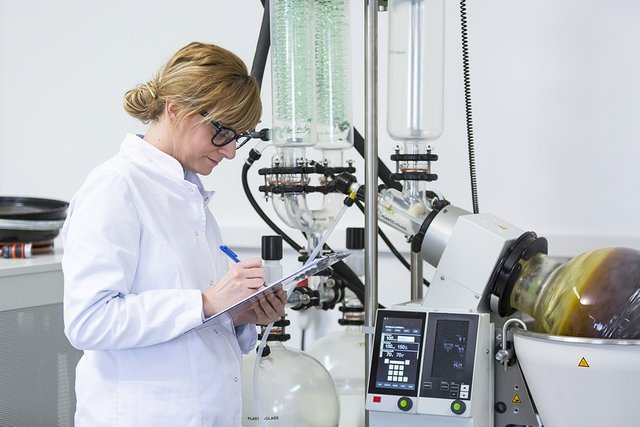New DEA Interim Rule Has Hemp Processors Concerned
On August 20, 2020, the United States Drug Enforcement Administration (“DEA”) issued an interim final rule (“IFR”) pertaining to the classifications of marijuana and hemp under the federal Controlled Substances Act (“CSA”) in light of the 2018 Agricultural Improvement Act (“AIA”).

Because the DEA asserts that the IFR “merely conforms DEA’s regulations to the statutory amendments to the CSA that have already taken effect,” the IFR took effect immediately on August 21, 2020, without having to undergo the notice and comment period usually required by the federal Administrative Procedure Act (“APA”) for agency rulemaking.
Although the DEA claims the IFR “does not add additional requirements to the regulations,” many in the hemp industry are concerned that the IFR omits, negligently or deliberately, important nuances involved in extraction processes regularly used by the hemp industry in a manner that could potentially subject hemp processors to criminal liability under the CSA.
As virtually everyone now knows, the AIA exempted hemp from the CSA, thereby legalizing hemp at the federal level. Hemp is defined in the AIA as “the plant Cannabis sativa L. and any part of that plant, including the seeds thereof and all derivatives, extracts, cannabinoids, isomers, acids, salts, and salts of isomers, whether growing or not, with a delta-9-tetrahydrocannabinol [“∆-9 THC”] concentration of not more than 0.3 percent on a dry weight basis.”
The AIA expressly did not legalize “marihuana,” “marihuana extract,” or “tetrahydrocannabinols” as those terms are defined in the CSA.
Stated simply, the IFR concludes that any cannabis or cannabis derivative containing more than 0.3% ∆-9 THC fails to meet the AIA definition of hemp and therefore remains a controlled substance under the CSA.
Although this conclusion may seem simple and logical at first glance, it could pose a significant threat to hemp processors because it appears to require that ∆-9 THC levels can never exceed 0.3% at any stage during a manufacturing process. The AIA clearly acknowledged that hemp could be processed due to its inclusion of the terms “derivatives, extracts, and cannabinoids” within its definition of hemp, however, the drafters of the AIA may have failed to carefully contemplate the practical realities of hemp processing.
Common hemp processing methods frequently result in the creation of intermediary and/or waste products that exceed 0.3% ∆-9 THC. Accordingly, the DEA appears to be taking the position that it could criminally prosecute a hemp processor if such processor creates any material containing more than 0.3% ∆-9 THC, even if such material is never offered for sale and only exists temporarily as an intermediary during the manufacturing process or is destroyed as a waste product at the end of production.
On one hand, it is currently unclear whether the DEA is interpreting the IFR in a manner that could be used as a sword against hemp processors and further if the DEA could even feasibly enforce such an interpretation as a matter of practical reality (e.g., whether the DEA has the manpower, technology, and political capital to begin investigating hemp processors to the level of testing intermediary and/or waste materials).

As of the date of this writing, we are not aware of any enforcement actions undertaken by the DEA against a hemp processor pursuant to the IFR.
On the other hand, the DEA has never been a friend to the hemp industry and any violation of the CSA carries potentially serious consequences including fines and even imprisonment. It is also worth noting the Food and Drug Administration (“FDA”) currently holds that all ingestible CBD products are illegal and its current policy of sending warning letters to individual companies selling CBD supplements is not having much of a chilling effect on the market. Government agencies do cooperate regularly, and one wonders if a frustrated FDA would attempt to enhance its deterrence powers by involving the DEA in a few high-profile enforcement actions.
Perhaps not surprisingly, the hemp industry has already begun to push back against the IFR. On September 18, 2020, a lawsuit was filed against the DEA challenging the validity of the IFR and asking that it be set aside for failure to comply with AIA and the APA.
Further, although the IFR did take effect immediately, the DEA is actively soliciting public comment on the IFR until October 20, 2020. Over 2,400 comments have already been submitted. Comments can be submitted here.
If you are at all concerned about the potential impact of the IFR on your business, we encourage you to contact The Rodman Law Group.
Authors: Jeff Wilson, Dave Rodman
The information in this blog post (the “Blog” or “Post”) is provided as news and/or commentary for general informational purposes only. The information herein does not, and shall never, constitute legal advice and therefore cannot be relied upon as a legal opinion. Nothing in this Blog constitutes attorney communication and is not privileged information. Nothing in the Post or on this website creates any kind of attorney-client relationship or privilege of any kind.
Originally published at https://therodmanlawgroup.com on September 25, 2020.